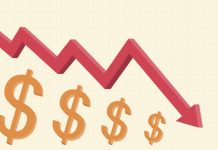Market movers today
Today we get euro area HICP figures for October. Following the higher than expected prints out of Germany, Italy and France we expect an increase to 10.8% from 9.9% in September.
We also get Q3 flash GDP figures for the euro area. Following some better than expected country figures last week, we expect 0.3% qoq growth.
This week, markets’ main focus will be on the US with both FOMC meeting and jobs report. We think it is too early to turn soft for the Fed, and we look for a 75bp hike and hawkish communication. We expect to see a relatively strong jobs report with another 220,000 employed.
We also have the Bank of England meeting this week. Markets lean towards a 75 bp rate hike.
The 60 second overview
Inflation: European inflation continues to surprise on the upside. On Friday German CPI for October rose to 10.4% from 10.0% in September. The HCPI measure jumped from 10.9% to 11.6%. In Italy the jump in inflation was even bigger as October HICP rose from 9.4% in September to 12.8% in October. Spain, however, was the “positive” surprise with headline inflation rising “just” 7.3% in October down from 9.0% in September. Part of the explanation is that Spanish energy inflation is now lower reflects the drop in natural gas and power prices in October that contrary to e.g. Germany feeds quickly into consumer prices. Today, we will see the euro area HCPI figures. Taking into account the numbers on Friday we expect a jump from 9.9% to 10.8%.
Brazil: Luiz Inácio Lula da Silva beat the incumbent Jair Bolsonaro in a heated second round of Brazil’s presidential election. Lula won 50.9% percent of the votes versus Bolsonaro’s 49.1%. Thanks to an electric voting system, the result was ready after three hours of counting. The electric voting system is only one of the things criticised by Bolsonaro during his election campaign, and many fear he may not accept a defeat but could instead instigate his voters to protest, in the worst case, triggering broad social unrest and instability. Lula is a 77-year old left-winger who served as Brazil’s president from 2003 until 2010. His pledge to end illegal deforestation of the Amazon is good news for the global fight against climate change. Yet, his reputation has been tarnished by accusations of corruption despite the court annulling his convictions. During his last time in power, a commodity price boom helped him push through successful social reforms that led to a substantial reduction in poverty. This time around, we can expect more centrist and moderate policies as Lula will have to govern a much divided country together with a broadly right-leaning Congress.
Bond sell-off: The higher than expected CPI numbers on Friday triggered a new move higher in European yields with 10Y bunds up 14bp to 2.10% and a new repricing of the ECB. The market is now pricing in roughly a peak in ECB rates at 2.75%. It was below 2.60% after the ECB meeting on Thursday that was perceived “dovish” by the market. That said, yields and rate expectations are still significantly lower than they were two weeks ago. The next couple of months we see further upside. However, as we discuss in Yield Outlook: Pressure on long yields to set to ease as central bank rates and inflation approach a turning point that we published on 28 October, the market is now looking for a change in central bank rhetoric (a pivot) and a peak in inflation which should point towards stable to lower yields in 2023. In respect of that, note that the Dutch ECB member Knot yesterday openly admitted that a recession is likely though he still calls for a 50 or 75bp hike in December.
Japan: On Friday, the Japanese government announced a USD270 billion (5.5% of GDP) spending package to ease inflation pains. This includes subsidies to cut utility bills. Electricity bills will be cut by roughly 20% from January to September next year, which will pull inflation lower. The package will largely be financed by an extra budget and thus more debt.
Equities rose Friday led by a strong US cash session where most indices ended close to day-high. Huge sector differences with the tech sector 3% higher and consumer discretionary 1%. These two cyclical sectors are normally strongly positive correlated but on Friday the effect of earnings reports sent the two sectors in opposite directions. The general take on earnings results hand-in Friday was positive, which probably boosted sentiment. With 53% reported of the S&P 500 companies, we have the earnings surprise factor at 3.5%. This is below the historical average despite revenues once again coming in at super solid surprise factor at 1.4%, which is way above the historical average. US equities on Friday, Dow +2.6%, S&P 500 +2.5%, Nasdaq +2.9% and Russell 2000 +2.3%. Asian markets higher this morning with China mainland being a negative outlier. European futures are higher this morning while US futures are mixed.
FI: The main event this week is the Federal Reserve meeting on Wednesday, where the consensus expectation is for a rate hike of 75bp. This is fully priced in the market rates, and the focus will be on the comments regarding policy outlook and the terminal rate. On top of this, there is the Bank of England meeting on Thursday and the US labour market report on Friday.
FX: EUR/USD slid back down below parity on Friday, where short-term EUR interest rates rebounded. USD/JPY rose close to 148 due to high oil price and higher US Treasury yields.
Credit: Credit markets were back in a positive mood on Friday weighing prospects of further relief to rates markets. Itrax main tightened 1.7bp to close at 116.6bp while Itrax main tightened 11.9bp to close at 542.8bp (the tightest level since mid-September).
Nordic macro
Sweden: In Sweden, we get wage data for August at 08:00 and at 14:30 Stefan Ingves participates in a panel discussion about price stability at Danmarks Nationalbank. We do not expect new signals there. Perhaps better chance for that tomorrow when he gives a speech about the economic outlook. Tomorrow we also have PMI figures and on Wednesday the Riksbank’s company survey is published, which will give interesting anecdotal evidence how the economy is faring.












